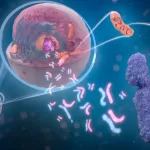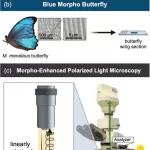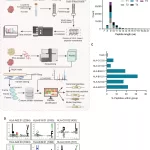March 23, 2024
Understanding the enigma of consciousness in infants has long intrigued scholars, yet unlocking this mystery has remained a formidable challenge. In response to this ongoing quest, academics from the University of Birmingham have introduced a novel methodology aimed at delineating the emergence of consciousness in human infancy.
The Persistent Question of Infant Consciousness
Since the days of seventeenth-century philosopher René Descartes, inquiries into the timing of consciousness onset in infants have persisted. Despite centuries of contemplation, the precise moment when infants transition into conscious beings continues to evade clear definition, presenting a conundrum for psychologists and philosophers alike.
A Paradigm Shift in Research Approach
In a noteworthy development outlined in Trends in Cognitive Sciences, Dr. Henry Taylor, Associate Professor of Philosophy, and Professor Andrew Bremner, Professor of Developmental Psychology, propose a pioneering approach to address this longstanding quandary. Their method involves identifying markers of consciousness in adults and tracking their emergence in infant development.
Unveiling Markers of Consciousness
The researchers advocate for the identification of specific behaviors or patterns of brain activation, deemed “markers” of consciousness in adults. By monitoring when these markers manifest in infants, researchers may gain insights into the onset of consciousness. Dr. Taylor underscores the necessity of this approach, particularly given the inability of infants to articulate their experiences.
Diverse Range of Markers
While recent research has highlighted specific markers of consciousness proposed by Prof. Tim Bayne and colleagues, including some present in late gestation and early infancy, Dr. Taylor and Prof. Bremner emphasize the need for a comprehensive examination of various markers. These include behaviors such as pointing, intentional control, and explicit memory, each offering unique insights into the emergence of consciousness.
A Complex Developmental Landscape
The journey to pinpointing infant consciousness is fraught with complexity, as diverse markers may indicate differing timelines for its emergence. Dr. Taylor acknowledges the challenge posed by discrepancies in marker emergence, suggesting a broad approach encompassing markers from both early and late development stages.
Towards a Holistic Understanding
As the quest for understanding infant consciousness continues, Prof. Bremner emphasizes the importance of considering a range of developmental models. By integrating a diverse array of markers and developmental timelines, researchers aim to unravel the intricate tapestry of infant consciousness, recognizing that the answer may not yield to a simple explanation.
Conclusion: Pioneering Steps Towards Clarity
The proposed methodology marks a significant stride in the ongoing exploration of infant consciousness, offering a promising avenue for researchers to navigate the complexities of human development. As scholars embark on this multidisciplinary endeavor, they endeavor to shed light on a timeless question that has captivated the human intellect for generations.
As academia embraces innovative methodologies, the quest to unravel the mysteries of infant consciousness enters a new phase of exploration and discovery.










